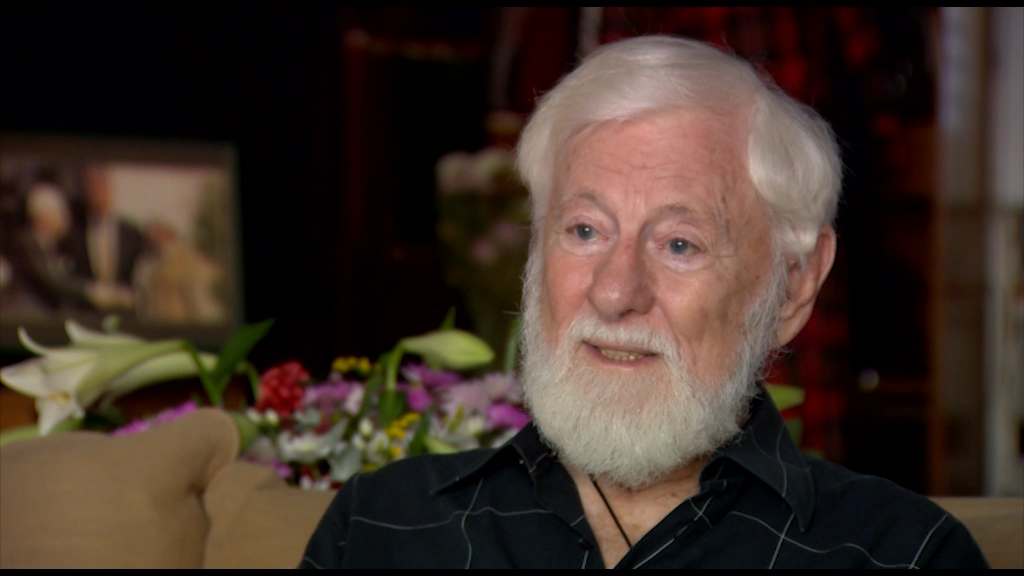NEXT STORY

When killing becomes an act of revenge
RELATED STORIES

NEXT STORY

When killing becomes an act of revenge
RELATED STORIES


|
Views | Duration | |
|---|---|---|---|
| 311. Hadashot steals our thunder | 11 | 03:21 | |
| 312. When killing becomes an act of revenge | 13 | 04:42 | |
| 313. Writing my autobiography from memory | 14 | 01:57 | |
| 314. Confronted by fury | 21 | 04:27 | |
| 315. I'm a born optimist | 26 | 04:06 |

A struggle started regarding the need, the possibility [of publishing the photo]. I met with the censor and I said: 'I don't understand you. You are saying that all four of them were killed during the attack. Here is a picture taken after the assault, so this can't be one of the hijackers; it is obviously a Jew who was mistakenly thought to be a hijacker − so there is no reason to prohibit the publication of the photograph'. There was no answer to that. 'It is forbidden'. Then pandemonium broke out behind the scenes, and the army started to make all kinds of excuses, that it was like this, and they thought it was like that, and that is what happened. There was no response. A commission of enquiry was appointed. During the enquiry, the General Security Services claimed that the Head of Central Command had killed him, the Head of Central Command who appears in our photograph. During this there was no longer any justification to censor the photograph and so we published the photograph on the cover of HaOlam HaZeh. All of the other newspapers were asked not to publish it and they complied with our request. There followed one of the most irksome events in my career as a newspaper editor. There was the Haaretz newspaper − it was the second newspaper of Haaretz called Hadashot – and they did not publish it at the request of the government spokesman or the IDF spokesman, but they published the photograph three weeks after us. There was a very interesting psychological phenomenon: a rumour was circulated that they had published it first, and everyone repeated this myth, this lie, this falsehood for years. And yet if the covers of Hadashot and HaOlam HaZeh had been compared showing the date, it would have been clear that Hadashot had published this three weeks later. Nothing helped. I think that even today, if someone were to write about this affair, they would say that Hadashot had published the picture first. It is very annoying. What did Hadashot do? They announced that the Commission of Enquiry had been set up. The Commission of Enquiry had been secret, but they published it. With all due respect, that is not how this affair was revealed. We had revealed it.
והתחיל מאבק גדול על הצורך, על האפשרות. נפגשתי עם הצנזור ואמרתי "אני בכלל לא מבין אתכם, אתם אומרים שכל הארבעה נהרגו בעת ההסתערות. הנה יש תמונה אחרי ההסתערות, אז זה לא יכול להיות אחד החוטפים, זה יהודי שבטעות חשבו שהוא חוטף ואין שום סיבה לאסור את הפרסום של התמונה”. לא הייתה תשובה לזה, "אסור". התחילה מאחורי הקלעים מהומה גדולה והתחילו כל מיני תירוצים של הצבא שזה ככה וחשבו שזה ככה וקרה ככה. לא הייתה תשובה. מינו ועדת חקירה. בוועדת החקירה השב"כ טען שאלוף הפיקוד הרג אותו, אלוף הפיקוד שבתמונה שלנו. תוך כדי כך לא הייתה יותר שום הצדקה לאסור את התמונה ואנחנו פרסמנו את התמונה בשער "העולם הזה”, וכל העיתונים האחרים קיבלו בקשה לא לפרסם ולא פרסמו. וזה היה אחד המקרים הכי מרגיזים בקריירה שלי כעורך עיתון, מפני שהיה עיתון של "הארץ", זה היה העיתון השני של "הארץ" שנקרא "חדשות" והוא לא פרסם לפי בקשת דובר הממשלה או דובר צה"ל, ופרסם את התמונה שלושה שבועות אחרינו. והייתה תופעה פסיכולוגית מאוד מעניינת – נפוצה השמועה שהוא פרסם ראשון, וכולם חזרו על האגדה הזאת, על השקר הזה, על הכזב הזה שנים. כשיש אפשרות הכי פשוטה להראות את השער של ״חדשות״, ואת השער של "העולם הזה", על השער כתוב התאריך ורואים ש"חדשות" פרסם את זה שלושה… לא עזר שום דבר. אני חושב שגם היום אם מישהו יכתוב על הפרשה הזאת יכתוב ש"חדשות" פרסם את התמונה ראשון. זה מאוד מרגיז. מה "חדשות" כן עשה? הוא פרסם את דבר הקמת ועדת החקירה. ועדת החקירה הייתה כאילו סודית, הוא פרסם את זה. כל הכבוד, אבל זה לא, לא זה פוצץ את הפרשה. אנחנו פוצצנו את הפרשה.
Uri Avnery (1923-2018) was an Israeli writer, journalist and founder of the Gush Shalom peace movement. As a teenager, he joined the Zionist paramilitary group, Irgun. Later, Avnery was elected to the Knesset from 1965 to 1974 and from 1979 to 1981. He was also the editor-in-chief of the weekly news magazine, 'HaOlam HaZeh' from 1950 until it closed in 1993. He famously crossed the lines during the Siege of Beirut to meet Yasser Arafat on 3 July 1982, the first time the Palestinian leader ever met with an Israeli. Avnery was the author of several books about the Israeli-Palestinian conflict, including '1948: A Soldier's Tale, the Bloody Road to Jerusalem' (2008); 'Israel's Vicious Circle' (2008); and 'My Friend, the Enemy' (1986).
Title: "Hadashot" steals our thunder
Listeners: Anat Saragusti
Anat Saragusti is a film-maker, book editor and a freelance journalist and writer. She was a senior staff member at the weekly news magazine Ha'olam Hazeh, where she was prominent in covering major events in Israel. Uri Avnery was the publisher and chief editor of the Magazine, and Saragusti worked closely with him for over a decade. With the closing of Ha'olam Hazeh in 1993, Anat Saragusti joined the group that established TV Channel 2 News Company and was appointed as its reporter in Gaza. She later became the chief editor of the evening news bulletin. Concurrently, she studied law and gained a Master's degree from Tel Aviv University.
Tags: HaOlam Hazeh, Hadashot
Duration: 3 minutes, 21 seconds
Date story recorded: October 2015
Date story went live: 26 June 2017